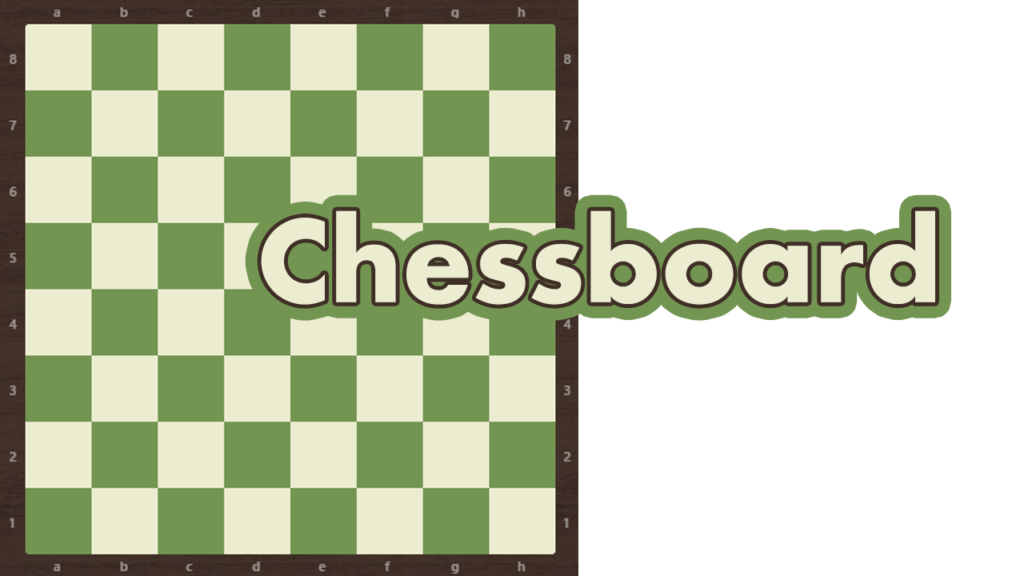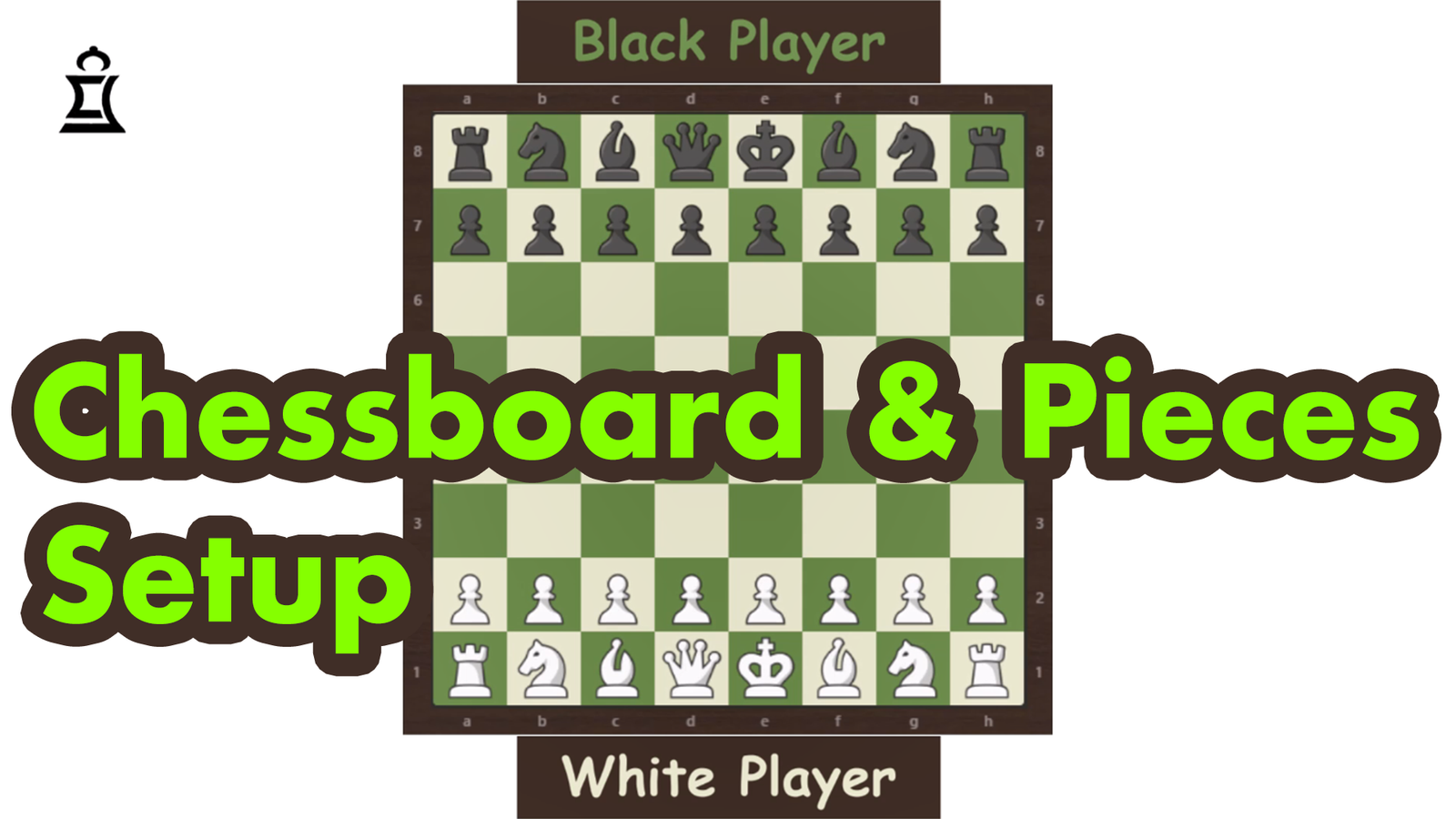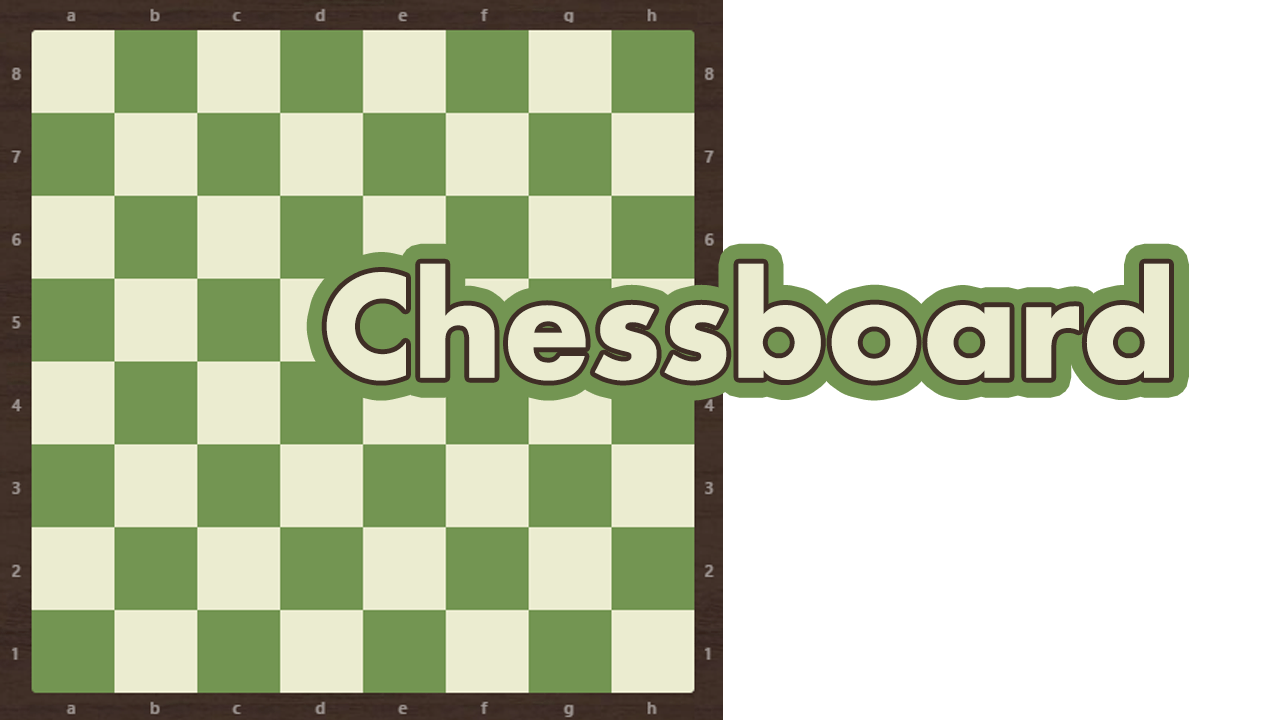A chessboard is a square-shaped board that has 8 vertical columns and 8 horizontal rows.
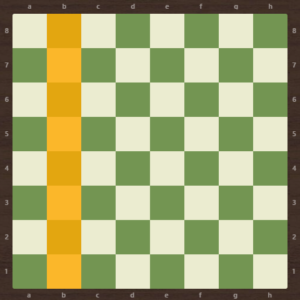 this is the e file,
this is the e file,
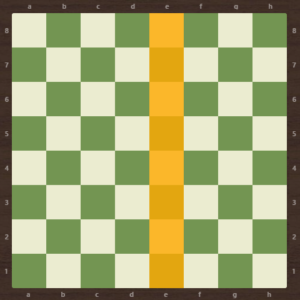 and this is the h file.
and this is the h file.
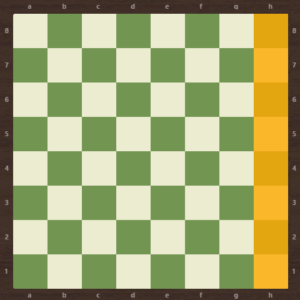 Typically, lowercase letters are used to denote file names.
The rows are called ranks, and they are denoted as 1, 2, 3, 4, 5, 6, 7, 8.
This is the 1st rank,
Typically, lowercase letters are used to denote file names.
The rows are called ranks, and they are denoted as 1, 2, 3, 4, 5, 6, 7, 8.
This is the 1st rank,
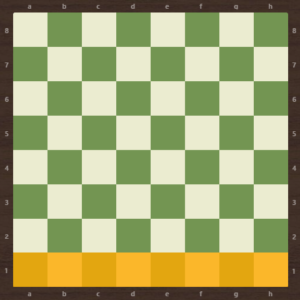 this is the 3rd rank,
this is the 3rd rank,
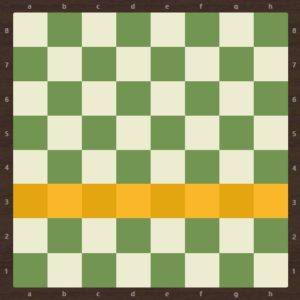 and this is the 7th rank.
and this is the 7th rank.
 At the edges of the board, you’ll find these symbols that represent the names of files and ranks, which are known as coordinates in chess.
Since there are 8 files and 8 ranks, the chessboard is divided into 64 small squares. These squares are marked with two different colors so that adjacent squares are always of different colors, while diagonal squares are of the same color. Typically, black and white are used, but you can choose any color combination you like.
Here, white and green are used because using a black piece on a black square could be confusing.
Squares and Their Names (Light and Dark Squares)
These boxes are referred to as squares. The white squares are called light squares, and the black squares are called dark squares. So, on a chessboard, there are 32 light squares and 32 dark squares, making up a total of 64 squares. This is why chess is sometimes called the game of 64 squares.
Each square has a unique name based on the file and rank it’s located in. The name of the square is formed by combining the file and rank it belongs to, in which the file’s name always coming first.
For example:
This square is located on the e file and the 5th rank, so its name is e5.
At the edges of the board, you’ll find these symbols that represent the names of files and ranks, which are known as coordinates in chess.
Since there are 8 files and 8 ranks, the chessboard is divided into 64 small squares. These squares are marked with two different colors so that adjacent squares are always of different colors, while diagonal squares are of the same color. Typically, black and white are used, but you can choose any color combination you like.
Here, white and green are used because using a black piece on a black square could be confusing.
Squares and Their Names (Light and Dark Squares)
These boxes are referred to as squares. The white squares are called light squares, and the black squares are called dark squares. So, on a chessboard, there are 32 light squares and 32 dark squares, making up a total of 64 squares. This is why chess is sometimes called the game of 64 squares.
Each square has a unique name based on the file and rank it’s located in. The name of the square is formed by combining the file and rank it belongs to, in which the file’s name always coming first.
For example:
This square is located on the e file and the 5th rank, so its name is e5.
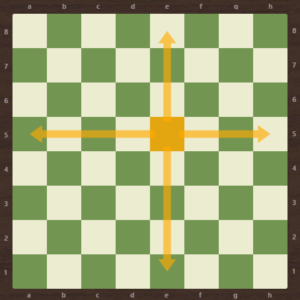 This square is located on the f file and the 2nd rank, so its name is f2.
This square is located on the f file and the 2nd rank, so its name is f2.
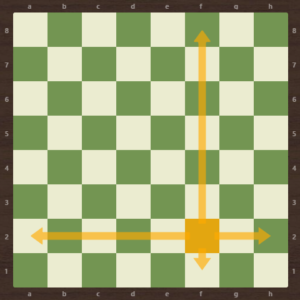 From Black’s perspective, this square is located on the g file and the 6th rank, so its name is g6.
From Black’s perspective, this square is located on the g file and the 6th rank, so its name is g6.
 In this figure, all the names of the squares are mentioned.
In this figure, all the names of the squares are mentioned.
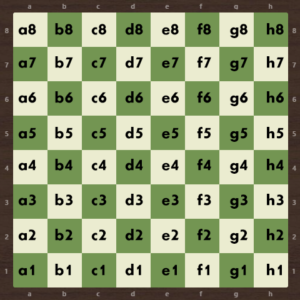 It’s important to remember them when learning the game. Later, these names will also be useful when learning how to make moves. It’s also essential to know the color of each square, which is something advanced players often consider. We’ll discuss this in detail later, but for now, just knowing the square names is enough.
You should always remember that h1 and a8 are light squares, meaning they will always be white.
Besides files and ranks, there’s another way to divide the chessboard, and that’s by using diagonals. Diagonals are useful when making diagonal moves, such as with the bishop or queen. Some examples of diagonals are:
a1 to h8,
It’s important to remember them when learning the game. Later, these names will also be useful when learning how to make moves. It’s also essential to know the color of each square, which is something advanced players often consider. We’ll discuss this in detail later, but for now, just knowing the square names is enough.
You should always remember that h1 and a8 are light squares, meaning they will always be white.
Besides files and ranks, there’s another way to divide the chessboard, and that’s by using diagonals. Diagonals are useful when making diagonal moves, such as with the bishop or queen. Some examples of diagonals are:
a1 to h8,
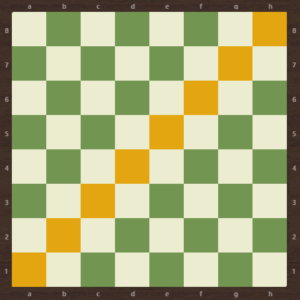 d1 to h5,
d1 to h5,
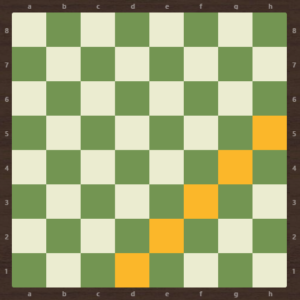 f1 to a6, etc.
f1 to a6, etc.
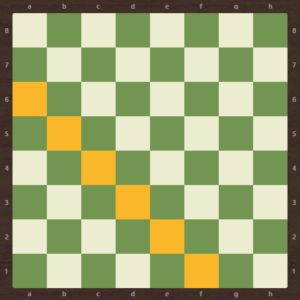 For now, this basic understanding of the chessboard is enough.
For now, this basic understanding of the chessboard is enough.
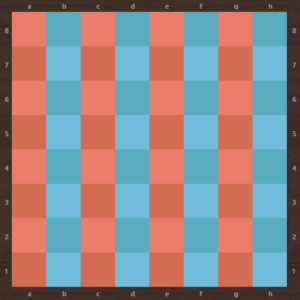

 this is the e file,
this is the e file,
 and this is the h file.
and this is the h file.
 Typically, lowercase letters are used to denote file names.
The rows are called ranks, and they are denoted as 1, 2, 3, 4, 5, 6, 7, 8.
This is the 1st rank,
Typically, lowercase letters are used to denote file names.
The rows are called ranks, and they are denoted as 1, 2, 3, 4, 5, 6, 7, 8.
This is the 1st rank,
 this is the 3rd rank,
this is the 3rd rank,
 and this is the 7th rank.
and this is the 7th rank.
 At the edges of the board, you’ll find these symbols that represent the names of files and ranks, which are known as coordinates in chess.
Since there are 8 files and 8 ranks, the chessboard is divided into 64 small squares. These squares are marked with two different colors so that adjacent squares are always of different colors, while diagonal squares are of the same color. Typically, black and white are used, but you can choose any color combination you like.
Here, white and green are used because using a black piece on a black square could be confusing.
Squares and Their Names (Light and Dark Squares)
These boxes are referred to as squares. The white squares are called light squares, and the black squares are called dark squares. So, on a chessboard, there are 32 light squares and 32 dark squares, making up a total of 64 squares. This is why chess is sometimes called the game of 64 squares.
Each square has a unique name based on the file and rank it’s located in. The name of the square is formed by combining the file and rank it belongs to, in which the file’s name always coming first.
For example:
This square is located on the e file and the 5th rank, so its name is e5.
At the edges of the board, you’ll find these symbols that represent the names of files and ranks, which are known as coordinates in chess.
Since there are 8 files and 8 ranks, the chessboard is divided into 64 small squares. These squares are marked with two different colors so that adjacent squares are always of different colors, while diagonal squares are of the same color. Typically, black and white are used, but you can choose any color combination you like.
Here, white and green are used because using a black piece on a black square could be confusing.
Squares and Their Names (Light and Dark Squares)
These boxes are referred to as squares. The white squares are called light squares, and the black squares are called dark squares. So, on a chessboard, there are 32 light squares and 32 dark squares, making up a total of 64 squares. This is why chess is sometimes called the game of 64 squares.
Each square has a unique name based on the file and rank it’s located in. The name of the square is formed by combining the file and rank it belongs to, in which the file’s name always coming first.
For example:
This square is located on the e file and the 5th rank, so its name is e5.
 This square is located on the f file and the 2nd rank, so its name is f2.
This square is located on the f file and the 2nd rank, so its name is f2.
 From Black’s perspective, this square is located on the g file and the 6th rank, so its name is g6.
From Black’s perspective, this square is located on the g file and the 6th rank, so its name is g6.
 In this figure, all the names of the squares are mentioned.
In this figure, all the names of the squares are mentioned.
 It’s important to remember them when learning the game. Later, these names will also be useful when learning how to make moves. It’s also essential to know the color of each square, which is something advanced players often consider. We’ll discuss this in detail later, but for now, just knowing the square names is enough.
You should always remember that h1 and a8 are light squares, meaning they will always be white.
Besides files and ranks, there’s another way to divide the chessboard, and that’s by using diagonals. Diagonals are useful when making diagonal moves, such as with the bishop or queen. Some examples of diagonals are:
a1 to h8,
It’s important to remember them when learning the game. Later, these names will also be useful when learning how to make moves. It’s also essential to know the color of each square, which is something advanced players often consider. We’ll discuss this in detail later, but for now, just knowing the square names is enough.
You should always remember that h1 and a8 are light squares, meaning they will always be white.
Besides files and ranks, there’s another way to divide the chessboard, and that’s by using diagonals. Diagonals are useful when making diagonal moves, such as with the bishop or queen. Some examples of diagonals are:
a1 to h8,
 d1 to h5,
d1 to h5,
 f1 to a6, etc.
f1 to a6, etc.
 For now, this basic understanding of the chessboard is enough.
For now, this basic understanding of the chessboard is enough. 
